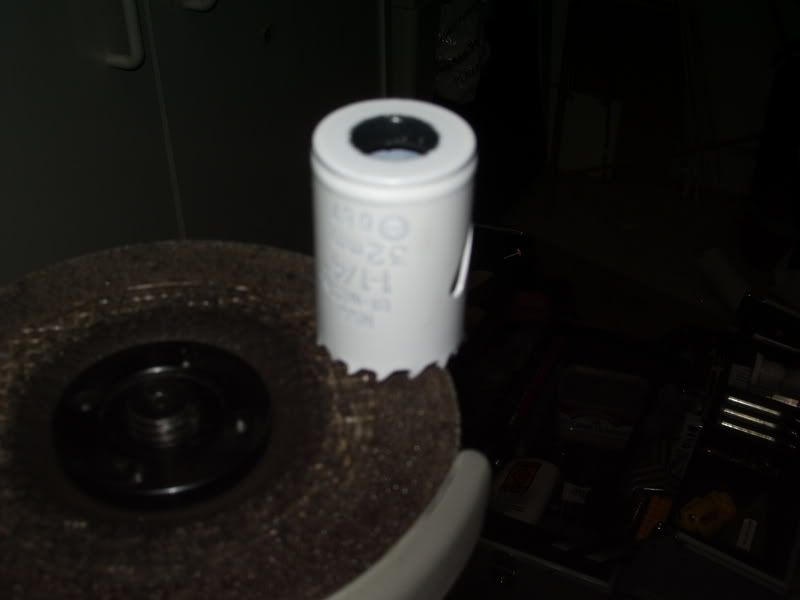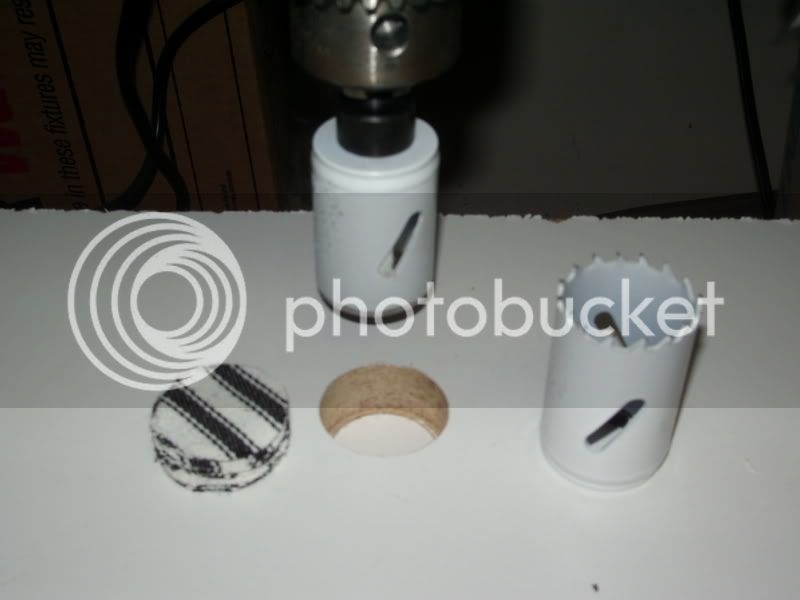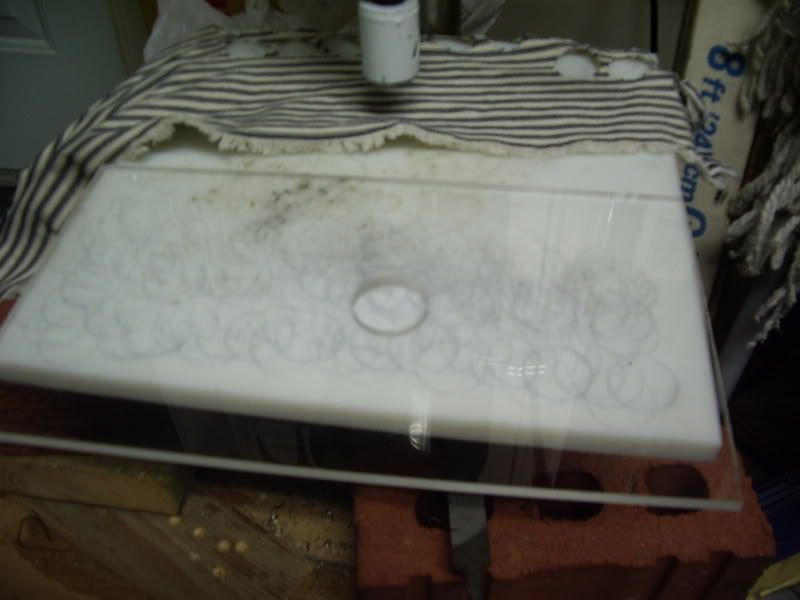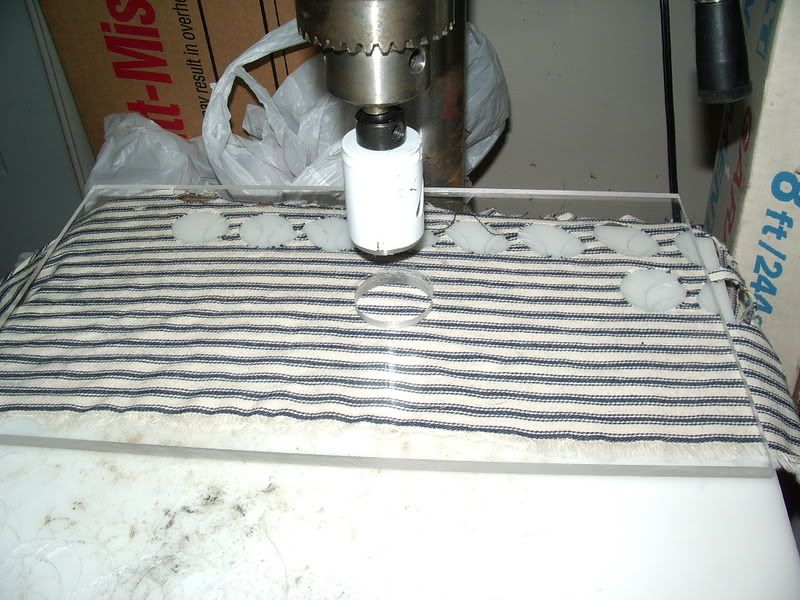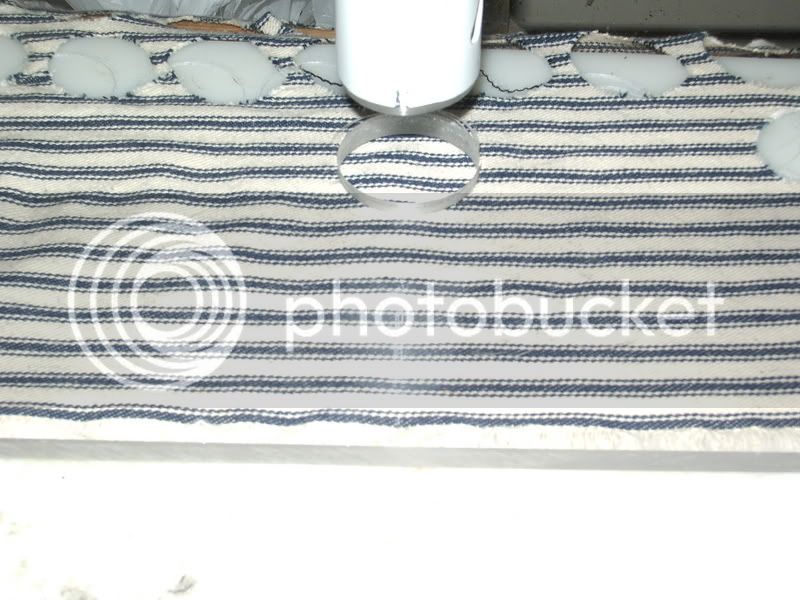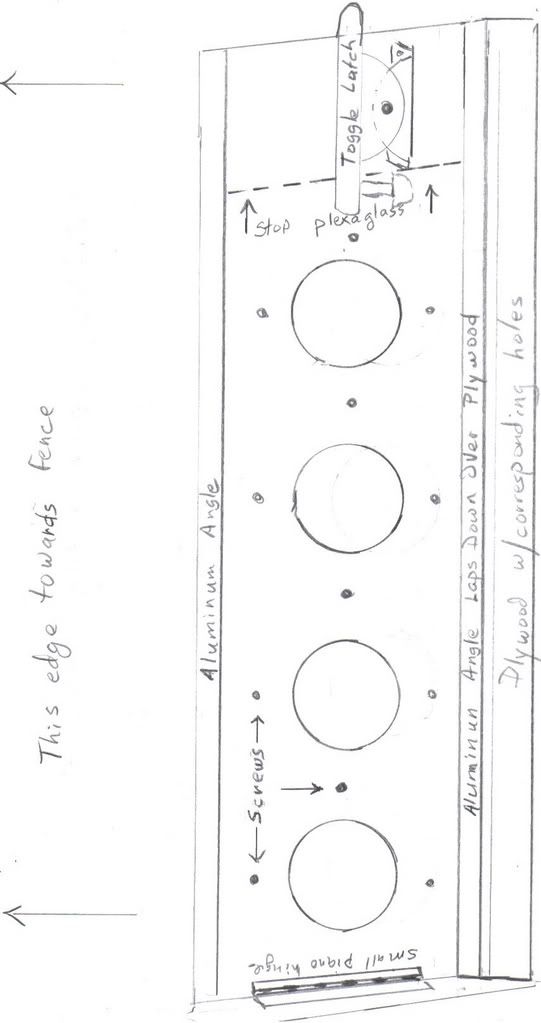It depends on what size patching you want to use. You should look first a " Keyhole " saws, which are circular metal blades, with teeth cut on the bottom, and an axle in the top of the fixture to fit in your drill chuck. These come in a variety of sizes or diameters.
If you have a drill press, you can also looke at iron water pipe, which comes in much smaller diameters. Thread one end, and fit it with an end cap. Then drill and tap the endcap for a screw which you will then chuck into the drill to spin the pipe. Then while the pipe is spinning, use a half round file to file a cutting edge on the open end of the pipe to cut the patches. You can saw and file a hole in one side of the pipe to help you get the patches out of the pipe. Cut several thicknesses of cloth with each stroke, with a piece of wood under the bottom of the stack of cloth to protect the edge of your cutter when all the cloth is cut. Masonnite seems to work quite well for this purpose, and is cheap enough. Cutting a stack of cloth at least 3/8-1/2" thick seems to be the most efficient way to produce pre-cut, round patches.
Some people simply tear and cut patches square, and they work just fine. Others continue with the old way by cutting the patching at the muzzle with a patch knife from a strip of patching carried tied to the strap of their possible bag. If you are going to lube your patch with anything other than spit, pre-cutting them either square, or round makes sense. If you are using spit for your lube, cutting the patch at the muzzle is really the easiest method to use. You stick the strip in your mouth to soak it with spit, then put it over the muzzle, center the ball, drive it into the muzzle with a short starter, or if your muzzle is coned, push it into the muzzle with your thumb, then cut the patch off, and continue driving the ball and patch down the barrel to the powder charge with your ramrod.
I recommend using alcohol for Lubing your patch if its below freezing, and oil or lube if you are hunting for many hours with a PRB in the gun. Alcohol and spit both dry out too quickly, and while you are not likely to get rust in the barrel under the ball when you use alcohol, you can rust the barrel where the patch meets the lands and grooves or bore of your gun when the spit dries out. i point this out because it should enter into your decision to make your own patches, and what size.




